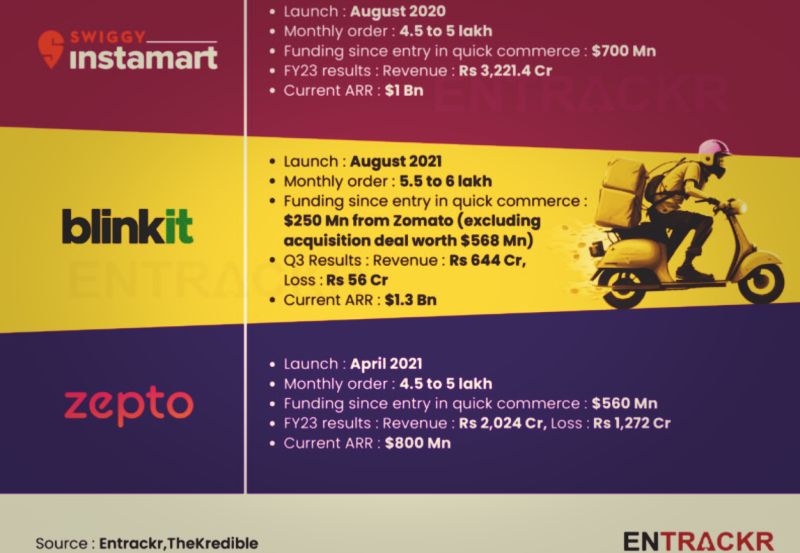India’s Quick-Commerce Revolution: A Market Poised for Unprecedented Growth

The quick-commerce sector in India witnessed an explosive growth of 77% in 2023, reaching an impressive $2.8 billion in gross merchandise value (GMV). According to Redseer, this sector now accounts for 5% of India’s overall e-commerce market, marking a significant shift in consumer shopping habits. Leading the charge are platforms like Shiprocket, Zepto, and Blinkit, redefining convenience with ultra-fast deliveries and seamless shopping experiences.
The Driving Forces Behind Quick-Commerce Growth
1. Speed & Convenience
In an era where time is invaluable, quick-commerce delivers essentials within minutes. Whether it’s groceries, medicines, or last-minute purchases, consumers are increasingly turning to these platforms for their daily needs.
2. Expanding Product Offerings
Beyond groceries and household items, the sector is diversifying into categories like white goods and electronics. This expansion is expected to further enhance its appeal and market penetration.
3. Rising Consumer Demand
With household spending surging by 18%, as reported by Kantar, consumers are seeking more efficient and instant solutions. Quick-commerce aligns perfectly with this shift, offering accessibility and ease like never before.
The Future of Quick-Commerce in India
The trajectory of India’s quick-commerce market is set for continuous expansion. As technology advances and logistics networks strengthen, we can expect even faster deliveries, smarter supply chains, and an even broader range of available products.
The synergy between evolving consumer expectations and rapid technological innovations is redefining the future of e-commerce in India. With unprecedented growth opportunities, quick-commerce is no longer just a trend—it’s the future of retail in India!
Conclusion
India’s quick-commerce revolution is transforming the way consumers shop, offering unparalleled speed, convenience, and product variety. As this sector continues to evolve, businesses must adapt to changing consumer expectations and leverage technological advancements to stay ahead. The future of quick-commerce in India is bright, and its impact on the retail ecosystem will only grow stronger in the coming years.
